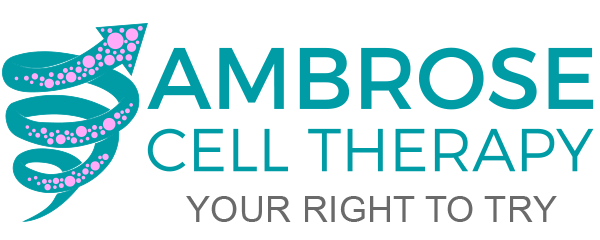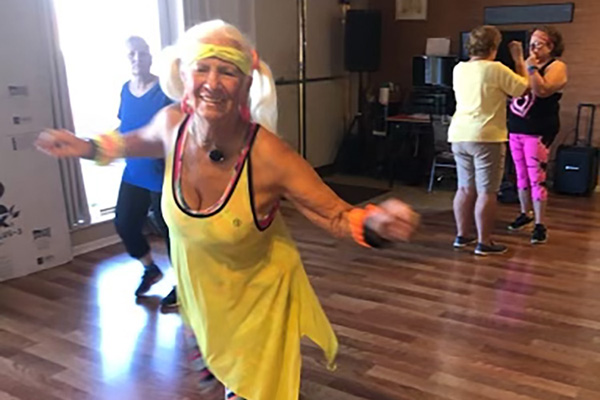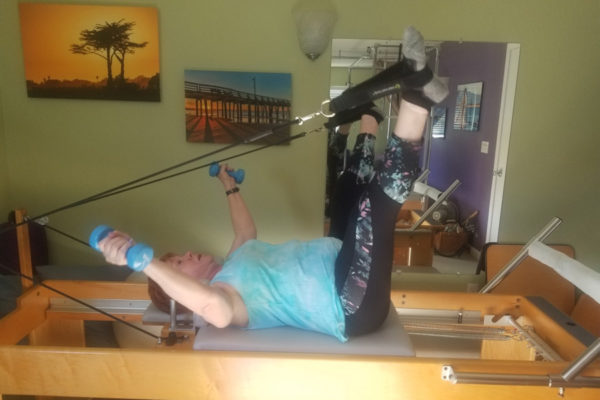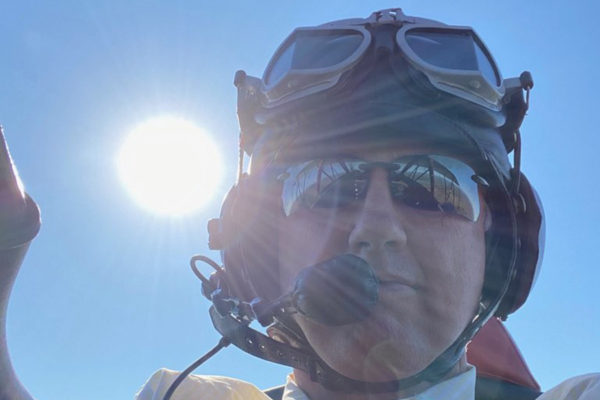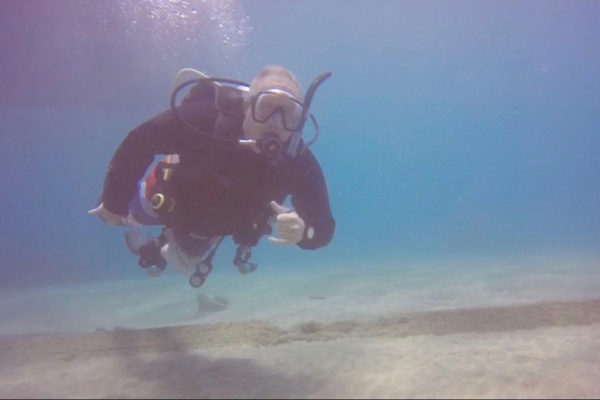
A Golden Era of Cell-Assisted Brain Care Ahead
A Golden Era of Cell-Assisted Brain Care Ahead
 Muhammed Ali’s 1960 Olympic Gold medal started his ascent to being “The Greatest,” but the countless blows to his head – which he welcomed to tire his opponent out – ended in a years-long failed fight to save his brain.
Muhammed Ali’s 1960 Olympic Gold medal started his ascent to being “The Greatest,” but the countless blows to his head – which he welcomed to tire his opponent out – ended in a years-long failed fight to save his brain.
In 2016, Parkinson-related issues took his life, though not before he sought out adult stem cell therapy. Unfortunately, Congress had not yet passed the Federal Right to Try Act of 2017.
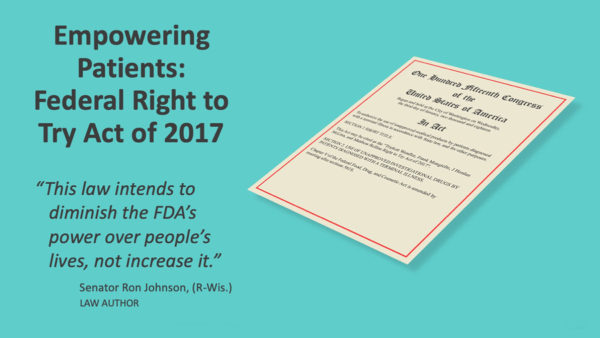
What if those who first observed Ali’s slurring, shuffling, and memory struggles had known about the healing factors adipose-derived stem and regenerative cells (ADRCs) secrete?
And what if Ali had the Right to Try to access his ADRCs?
Would he have resumed floating like a butterfly and stinging like a bee? No, but that’s not the point, either.
Ali would have had a fighting chance at a better quality of life. Instead, he faced a decades-long struggle with his Parkinson’s symptoms and the PD drug’s side effects of nausea and tremors, not to mention the other medical conditions with which he lived.
Ali’s descent is a stark example of the risks of brain injuries to our long-term brain health.[1] And these risks are not unique to him or boxing.
Tim’s Win
“I raced in hundreds of powerboat races. Maybe I’m lucky…maybe I’m blessed…maybe I’m genetically superior…or maybe I’m all three, with help from my ADRCs!” says Tim.
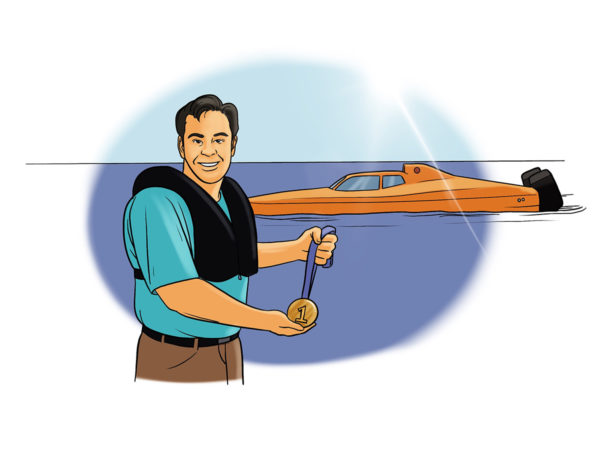 In 2000, Tim retired from offshore powerboat racing with four world speed records. He once hit upwards of 180 mph.
In 2000, Tim retired from offshore powerboat racing with four world speed records. He once hit upwards of 180 mph.
Arguably more at risk than Ali, he suffered innumerable head traumas, lost consciousness, and survived a near-death coma on the way to winning his Gold Medals.
In the early 2000s, Tim’s family and friends noticed his hands shaking. In 2008, a neurologist diagnosed him with essential tremors.
 Essential tremor is a nervous system (neurological) disorder that causes involuntary and rhythmic shaking. It can affect almost any part of your body, but the trembling occurs most often in your hands — especially when you do simple tasks, such as drinking from a glass, handwriting, or tying shoelaces.
Essential tremor is a nervous system (neurological) disorder that causes involuntary and rhythmic shaking. It can affect almost any part of your body, but the trembling occurs most often in your hands — especially when you do simple tasks, such as drinking from a glass, handwriting, or tying shoelaces.
“The cause was a breakdown in the electrical connections in the nervous system due to adverse trauma,” Tim’s neuro explained. He forecasted continued deterioration.
Essential tremors are a suspected risk factor for Parkinson’s disease.[2] And as discussed in detail below, concussions significantly increase the risk of Alzheimer’s, Parkinson’s, ALS, and other neurodegenerative disorders.
Tim’s powerboat racing magnified the risk from contact sports. “It’s been determined that offshore race boat drivers experience more G forces in one race than all the astronauts in the history of NASA have experienced put together. The impact would come up your spine. My head would wobble like a bobble doll,” Tim explained.
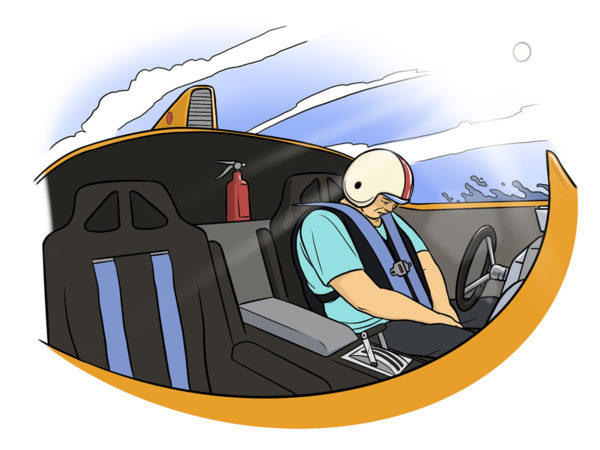 “I must have had 1,000 concussions while racing. I probably went unconscious 100 times behind the wheel from the G-forces,” Tim estimated.
“I must have had 1,000 concussions while racing. I probably went unconscious 100 times behind the wheel from the G-forces,” Tim estimated.
Before Tim had the “need for speed,” he played high school and college football. “This was in the days long-before helmet-on-helmet rules, and concussion protocols were in place. I remember getting hit in the head, going to the wrong sideline, and being put right back out on the field”, he recalled.
Tim also tells about his near-catastrophic motorcycle accident when he was a teen: “No helmet, of course…in the hospital for ten days…coma, severe concussion.”
Tim’s Right to Try
In March 2016, Tim accessed his ADRCs offshore with AMBROSE’s prior group. (Okyanos Cell Therapy, Freeport, Bahamas). Almost seven years later, he said, “I should be in much worse shape than I am.”
“My tremors are barely noticeable to other people now. I can eat soup without losing 2/3s of it between the bowl and my mouth. My writing isn’t perfect like I learned in Catholic school growing up, but I can sign checks and write legibly. My memory is fine.”
“The benefit of the stem cells is that it reconnected the wiring,” said Tim.
Tim credits his ADRCs-based cell therapy with other unexpected benefits:
- “I wore glasses when I raced and before my treatment. Afterward, my vision improved to 20/20. I no longer wear glasses, including readers.” Tim is 63 years young.
- After all the pounding on my ears and brain from racing and playing the drums in high school, I expected to be deaf by now.” he half-joked. “Instead, my hearing, senses of smell, and taste are better than they were before.”
Remarkably, Tim only recently developed high blood pressure and has no joint or spine issues.
Given Tim’s baseline and absence of other interventions, it would be difficult to attribute his sustained six-year improvement to anything other than his ADRC-based treatment.
Thus, we foresee a Golden Era of Brain Care ahead. More on that in a moment; first, some background.
Background
In the late 1970s, boxing fans observed changes in Muhammed Ali’s speed and speech. Others noted that Ali seemed bored and emotionally detached. The Greatest estimated his opponents hit him in the head 29,000 times – that is like being whacked in the skull day in and day out for 79 years.
And even in fights that he won, Ali took some vicious beatings, especially later in his career. He described the epic third fight with Joe Frazier, in which Ali retained his title after 14 brutal rounds, as “the next thing to death.”
In 1984, three years after retiring from the ring, Ali was diagnosed with Parkinson’s Disease (PD). At that time, doctors did not link the brutal poundings with PD.
Further, TBI research did not associate Ali’s brain damage with chronic traumatic encephalopathy (CTE), the term researchers use to describe a disease of the brain (encephalopathy) caused by repeated head traumas.
Nor did his doctors connect CTE to his frequent bouts of pneumonia, infections, or dementia.
Ali’s descent is a stark example of the risks of brain injuries to our long-term brain health.[3] And these risks are not unique to him or boxing.
CTE is Pervasive
Will Smith’s movie, Concussion brought public awareness to the devastation too many football players face later in life. NFL players are paid big bucks for taking three times the risk of dying from brain disorders than the fans watching them. That risk expands to four times for Alzheimer’s and ALS, respectively.[4]
In 2017, the Journal of the American Medical Association published a study revealing bleak futures for former NFL players. Their median age of death was just 67, and out of the 111 post-mortems, 99% — were diagnosed with CTE.
CTE symptoms vary depending on how advanced or severe it is, but people may experience memory problems, mood disorders, depression, and lapses in judgment.
Brain Trauma – Adding Insult to Injury and Injury to Insult
Brain trauma can be mild or minor, severe, or significant. You don’t have to be an NFL player, a boxer, or race powerboats to increase the probability of Alzheimer’s, Parkinson’s, and other neurologic problems.
After head trauma, some victims recover right away, but many suffer from a constellation of disturbances, including fatigue, poor memory, insomnia, pain, vision, speech, and balance difficulties. [5] [6]
Going the Distance from Brain Science to Brain Care
Ali had another fight separate and apart from his Parkinson’s battle: The chasm between the known factors contributing to neurological conditions and the treatment options available to patients suffering from them.
The gap became apparent in 2006 when Dr. William Langford, the first Chief Science Officer of the Michael J. Fox Foundation, published Parkinson’s Complex: Parkinsonism Is Just the Tip of the Iceberg.[7]
In short, Dr. Langford’s seminal paper stated PD was not limited to the loss of dopamine-producing neurons in the substantia nigra. Instead, Parkinsonism involves multisystem breakdowns. Therefore, he said, “Rather, we must deal with all aspects of the disease if we are to modify its progress in a way that truly enhances the lives of our patients over the long term.“
Subsequently, researchers discovered the same interconnected dysregulations after a TBI, stroke, spinal cord injury, Alzheimer’s, etc. Brain diseases don’t pull any punches – they spare no physiologic system.
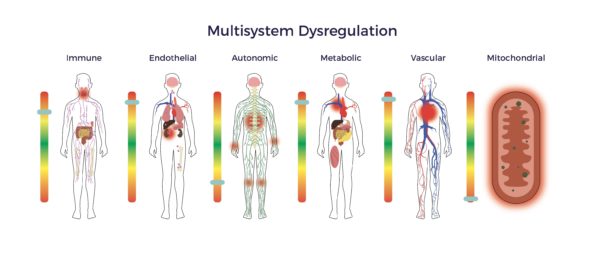
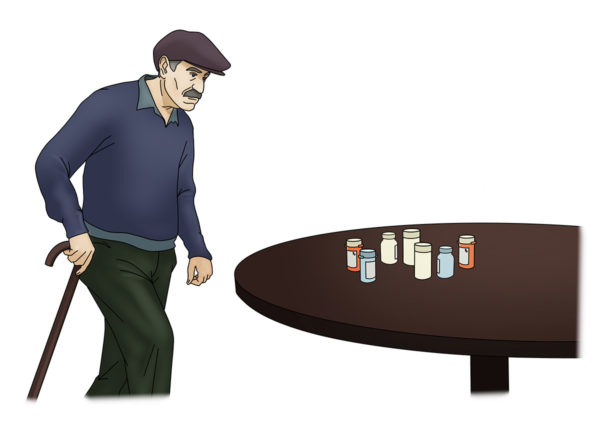 To solve for this, doctors prescribe patients drugs for each ailment or symptom, e.g., Sinemet for Parkinson’s, Ambien for sleep, steroids for arthritis, opioids for pain, and so forth.
To solve for this, doctors prescribe patients drugs for each ailment or symptom, e.g., Sinemet for Parkinson’s, Ambien for sleep, steroids for arthritis, opioids for pain, and so forth.
Drug side effects include accelerating the decline in cognitive function.[8]
Dr. Armon Neel Jr. cautions that ten drug classes contribute to dementia progression.
Multisystem dysregulation is a chicken and egg problem. Nearly all patients with brain degeneration live with multiple chronic conditions (co-morbidities).
Tim’s ADRCs – Miracle-Gro For His Brain
Miracle-Gro feeds your garden’s soil with the nutrients it needs to grow healthy roots, stems, petals, and leaves. And just as there are situations in which we fertilize a plant lacking vital nutrients, ADRCs secrete growth factors essential to the health of our aging brains, hearts, muscles, nerves, and so on. [9] Growth factors (GFs) are a type of cytokine or healing molecule that act on other cells to stimulate growth and function.
One such growth factor group is “Neurotrophic factors (NTFs).” Neuro relating to nerve and trophic, from Ancient Greek trophikós, meaning “of food or nourishment.” In other words, NTFs feed our neurons and nerves with nutrients.
Brain-derived neurotrophic growth (BDNF) stimulates new brain cells, brain cell connections, and nerves. It also repairs the myelin sheathing surrounding the nerves.
It gets better: BDNF is anti-inflammatory and prevents programmed cell death (apoptosis) resulting from an injury or disease. [10] [11] [12] [13] [14]
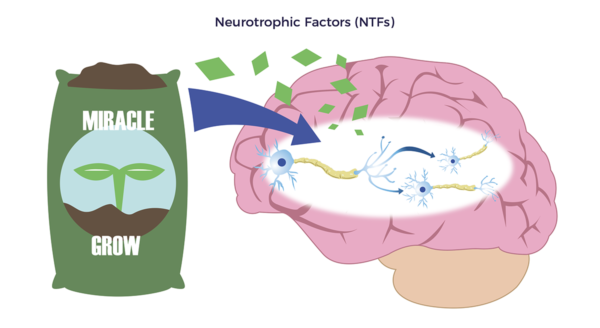
Many benefits are associated with higher levels of BDNF, including improved mood, productivity, and memory. One 10-year study that tracked BDNF levels in adults found that those with low levels were twice as likely to develop dementia and Alzheimer’s than those with the highest levels.[15]
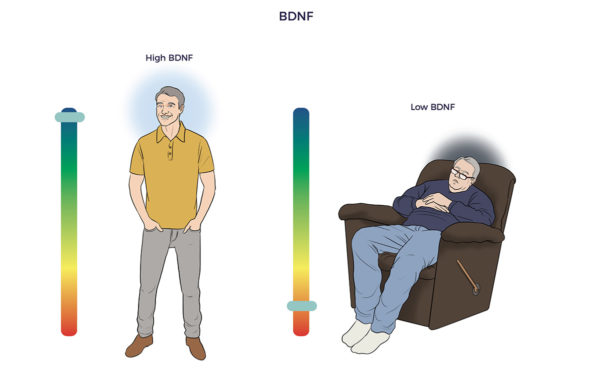 John Hopkins researchers developed a BDNF-blood test that could have predicted the severity of Ali’s head damage and how he would fare. Their study showed that patients with brain injuries have less than one-third of the BDNF as those with healthy brains.
John Hopkins researchers developed a BDNF-blood test that could have predicted the severity of Ali’s head damage and how he would fare. Their study showed that patients with brain injuries have less than one-third of the BDNF as those with healthy brains.
The most severe TBIs had even lower levels- about 5% of normal. Moreover, patients with high levels of BDNF recovered from their injuries six months later. But symptoms lingered at follow-up in patients with the lowest levels of BDNF.[16]
 ADRCs also enrich the brain with vascular endothelial growth factor (VEGF). VEGF restores blood flow and reduces inflammation in withering tissues, blood vessels, and organs. One study found higher levels of VEGF in asymptomatic seniors who died with amyloid plaques compared to symptomatic Alzheimer’s patients.
ADRCs also enrich the brain with vascular endothelial growth factor (VEGF). VEGF restores blood flow and reduces inflammation in withering tissues, blood vessels, and organs. One study found higher levels of VEGF in asymptomatic seniors who died with amyloid plaques compared to symptomatic Alzheimer’s patients.
Notably, ADRCs secrete dozens of other healing factors.[17]
In combination, ADRCs restore multisystem balance or homeostasis – at the cellular, tissue, organ, and multisystem levels.

By the way, big pharma can’t discover a single molecule they can sell millions of copies of per year that can restore physiologic balance. Their drugs suppress the disease’s presumed- but often wrong -causes.
Thus, we believe Ali could have benefited from accessing his ADRCs. The medical literature supports it – and so does Tim’s powerful reversal of his symptoms. If only Ali had the Right to Try. [18] [19] [20] [21] [22] [23]
[2] Tarakad A, Jankovic J. Essential Tremor and Parkinson’s Disease: Exploring the Relationship. Tremor Other Hyperkinet Mov (N Y). 2019; 8:589. Published 2019 Jan 9.
[3] Ledreux A, Pryhoda MK, Gorgens K, Shelburne K, Gilmore A, Linseman DA, Fleming H, Koza LA, Campbell J, Wolff A, Kelly JP, Margittai M, Davidson BS and Granholm A-C (2020) Assessment of Long-Term Effects of Sports-Related Concussions: Biological Mechanisms and Exosomal Biomarkers. Front. Neurosci. 14:761.
[4] Lehman EJ, Hein MJ, Baron SL, Gersic CM. Neurodegenerative causes of death among retired National Football League players. Neurology. 2012 Sept 5 [Epub ahead of print].
[5] R. Jorge et al Major Depression Following Traumatic Brain Injury Arch Gen Psychiatry/Vol 61 Jan 2004
[6] D. Nampiaparampil Prevalence of Chronic Pain After Traumatic Brain Injury A Systematic Review. JAMA.2008;300(6):711–719.
[7] Langston J W The Parkinson’s Complex: Parkinsonism Is Just the Tip of the Iceberg Annals of Neurology Vol 59 No 4 April 2006
[8] Ishii N et al. Polypharmacy Associated with Cognitive Decline in Newly Diagnosed Parkinson’s Disease: A Cross-Sectional Study Dement Geriatr Cogn Disord Extra 2019; 9:338–343
[9] A Caplan PhD MSCs: The Sentinel and Safe-Guards of Injury J. Cell. Physiol. 231: 1413–1416, 2016.
[10] Razavi, Shahnaz et al. “Neurotrophic Factors and Their Effects in the Treatment of Multiple Sclerosis.” Advanced Biomedical Research 4 (2015): 53. PMC. Web. 28 Sept. 2018.
[11] J. K. Huang et al Myelin Regeneration in Multiple Sclerosis: Targeting. Endogenous Stem Cells., The American Society for Experimental NeuroTherapeutics, Inc. 2011
[12] T Lopatina et al. (2011) Adipose-Derived Stem Cells Stimulate Regeneration of Peripheral Nerves: BDNF Secreted by These Cells Promotes Nerve Healing and Axon Growth De Novo. PLoS ONE 6(3): e178991
[13] S. Seigo et al, Uncultured adipose-derived regenerative cells promote peripheral nerve regeneration, Journal of Orthopaedic Science, Volume 18, Issue 1,2013, Pages 145-151
[14] Xu et al Brain-derived neurotrophic factor reduces inflammation and hippocampal apoptosis in experimental Streptococcus pneumoniae meningitis Journal of Neuroinflammation (2017) 14:156
[15] Jiao SS, Shen LL, Zhu C, et al. Brain-derived neurotrophic factor protects against tau-related neurodegeneration of Alzheimer’s disease. Transl Psychiatry. 2016;6(10):e907.
[16] FK K. Korley et al Circulating Brain-Derived Neurotrophic Factor Has Diagnostic and Prognostic Value in Traumatic Brain Injury JOURNAL OF NEUROTRAUMA 33:215–225 (January 15, 2016)
[17] Hirose, Yujiro et al. Comparison of trophic factors secreted from human adipose-derived stromal vascular fraction with those from adipose-derived stromal/stem cells in the same individuals Cytotherapy, Volume 20, Issue 4, 589 – 591
[18] JK Fraser PhD and S. Kesten MD Autologous Adipose Derived Regenerative Cells: A platform for therapeutic applications Advanced Wound Healing Surgical Technology International XXIX
[19] C. Tate and C Case. Mesenchymal Stromal Cells to Treat Brain Injury. Advanced Topics in Neurological Disorders.
[20] S Dobrowolski and G Lepski. Stem Cells in Traumatic Brain Injury. American Journal of Neuroscience 4 (1): 13-24
[21]CS et al. Autologous bone marrow mononuclear cell therapy for severe traumatic brain injury in children. Neurosurgery 2011; 68: 588–600
[22] N Tajiri et al. Intravenous transplants of human adipose-derived stem cell protect the brain from traumatic brain injury-induced neurodegeneration and motor and cognitive impairments: cell graft biodistribution and soluble factors in young and aged rats. J Neurosci. 2014 Jan 1;34(1):313-26
[23] Sharma et al Cell therapy attempted as a novel approach for chronic traumatic brain injury – a pilot study SpringerPlus (2015) 4:26
